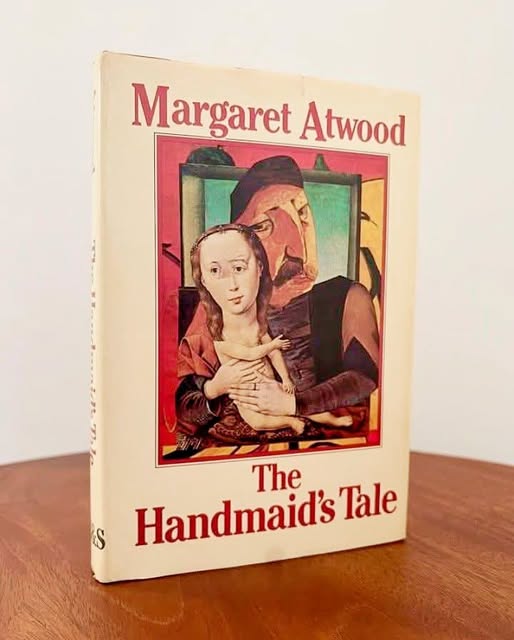Margaret Atwood’s “The Handmaid’s Tale” stands as one of the most profoundly unsettling visions of our possible future, a dystopian masterpiece that has evolved from speculative fiction to cultural warning sign since its 1985 publication. The novel immerses us in the chilling reality of Gilead, a theocratic regime that has overthrown the United States, where women are systematically stripped of rights and fertile “Handmaids” like our narrator Offred are forced into reproductive slavery.
Atwood constructs this nightmare with meticulous realism, drawing every horrific element from historical precedents – from the Puritan witch trials to Romanian birth decrees to Argentinian disappearances. The genius of her world-building lies in its terrifying plausibility; Gilead doesn’t feel invented so much as remembered. Through Offred’s fragmented, present-tense narration, we experience the claustrophobia of her red-and-white existence, where every glance could be surveillance and even memories of her former life with a husband and daughter become dangerous contraband.
The novel’s power accumulates in quiet moments of rebellion – stolen hand touches, whispered confidences, the illicit thrill of Scrabble games with the Commander. Atwood masterfully shows how totalitarian regimes operate through both brute force and psychological manipulation, weaponizing language (“Unwomen,” “Particicution”) and religion to enforce submission. Yet even in this world of checkpoints and Eyes, resistance persists through underground networks, coded messages, and the preservation of personal identity against all odds.
What makes The Handmaid’s Tale endure as a cultural touchstone is its uncomfortable mirror to our own society. The erosion of women’s rights, the rise of religious extremism in politics, the manipulation of language and history – Atwood didn’t invent these threats but distilled them into their logical conclusion. The famous red cloaks and white wings have become global symbols of protest, appearing at women’s marches from Washington to Warsaw, testifying to the novel’s prophetic resonance.
Perhaps most brilliant is Atwood’s framing device – the “Historical Notes” epilogue set centuries later, where academics debate Offred’s account with chilling detachment. This final twist reminds us that even the most horrific regimes eventually become footnotes, and that complacency is the enemy of freedom. As our world grapples with fresh assaults on bodily autonomy and democratic norms, The Handmaid’s Tale remains not just a brilliant work of fiction, but an essential cautionary tale for our times.

